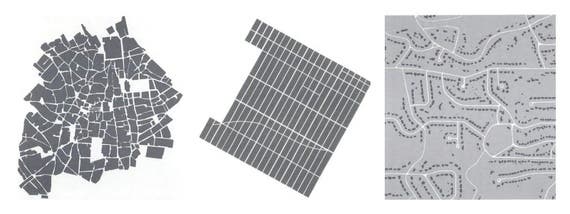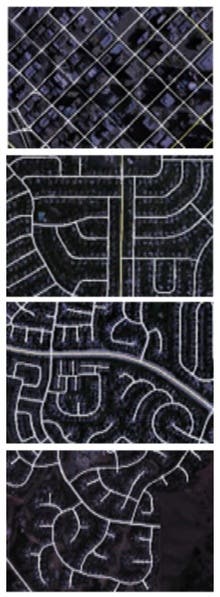A first of its kind study conducted at the University of Colorado Denver looked at how city design affects populace health. Older cities, initially built for pedestrian traffic in mind were found to harbor less cases of diabetes and other diseases than those with broader streets and fewer intersections. While some people can stay healthy and stick to exercising habits no matter where they live in, the study suggests that in general cities which are optimized for vehicle traffic discourage walking and other healthy activities.
“Previously we had found that people drive less and walk more in more compact cities with more intersections per square mile,” said study co-author Wesley Marshall, PhD, PE, assistant professor of engineering at the CU Denver, a major center of timely, topical and relevant research. “Now we’ve been able to link these city design qualities to better health.”

A simple grid design is better for community health
The team looked at 24 medium-sized California cities with populations between 30,000 and just over 100,000. Street network density, connectivity and configuration were mapped and put against data related to health hazards like obesity, diabetes, heart diseases, asthma and more. The study used data collected by the California Health Interview Survey for the years 2003, 2005, 2007 and 2009, sampling between 42,000 and 51,000 adults.
“We built these dense, connected street networks for thousands of years but only over the last century or so did we switch to designing sparse, tree-like networks with cars in mind,” said co-authored by Norman Garrick, PhD.
Results suggest that increased intersection density and shorter blocks are linked to reduction in obesity at the neighborhood level and of obesity, diabetes, high blood pressure, and heart disease at the city level. Oppositely, wider streets and more lanes were linked to increased obesity rates. The researchers explain this may be due to an inherently less amiable environment for pedestrians. The health differences are significant: “older, denser, connected cities were killing three times fewer people than sparser, tree-like cities on an annual basis,” Marshall says.

(Journal of Transportation and Health)
As older cities grew and new cities came to be, street design has evolved from a simple grid, which became carelessly regarded as too simple and lacking personality, to a tree like street design we typically witness in suburbs. Garrick and Marshall have also previously found that people who live in more sparse, tree-like communities spend about 18 percent more time driving than do people who live in dense grids. And they die more readily—despite old research that implied otherwise.
Also, the researchers also observed more fast food restaurants were associated with higher diabetes rates while additional convenience-type stores across a city correlated with higher rates of obesity and diabetes.
“Over the course of the 20th century, we did a great job of engineering utilitarian active transportation out of our daily lives,” said Marshall, who works in CU Denver’s College of Engineering and Applied Science. “While they were well-intentioned design decisions, they effectively forced people to make an effort to seek out exercise and we are now seeing the health implications of these designs.”
If you’re a proactive individual, choosing a city based on these sort of demographics might not matter too much. You’d still exercise and went about your typical healthy habits. For most people, however, any additional effort that interferes with exercising or a wider exposure to unhealthy choices (fast food, liquor and so on) matter and can have detrimental effects across a city’s whole population.
“Taken together these findings suggest a need to radically re-think how we design and build the streets and street networks that form the backbone of our cities, towns and villages,” Garrick said. “This research is one more in a long line that demonstrates the myriad advantages of fostering walkable places.”
Findings were reported in the Journal of Transport & Health.



